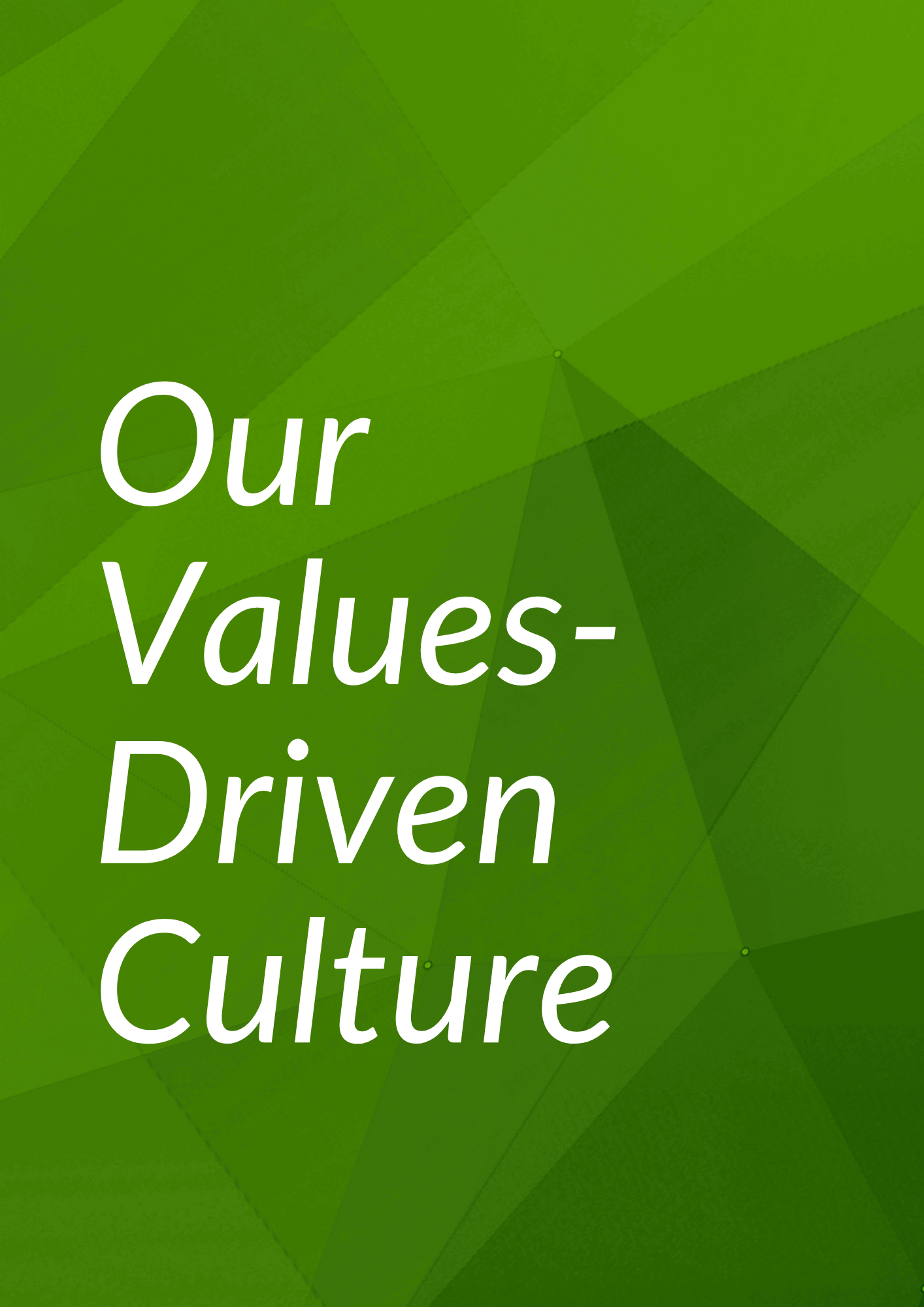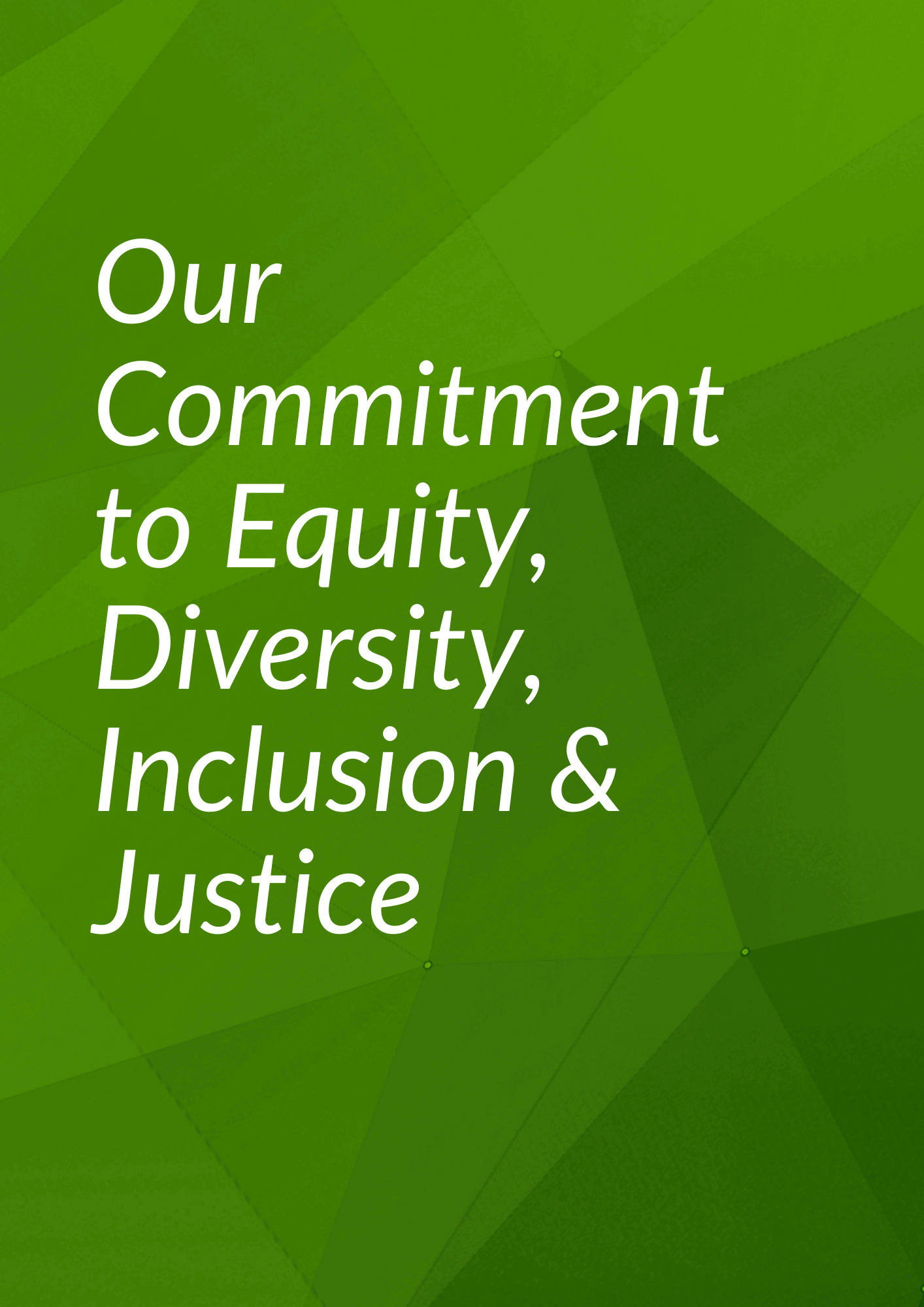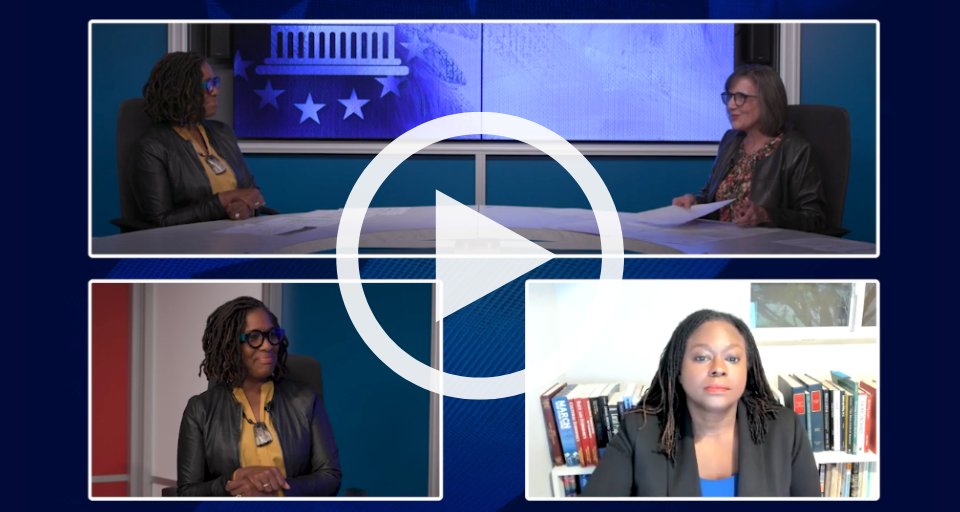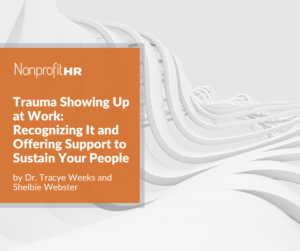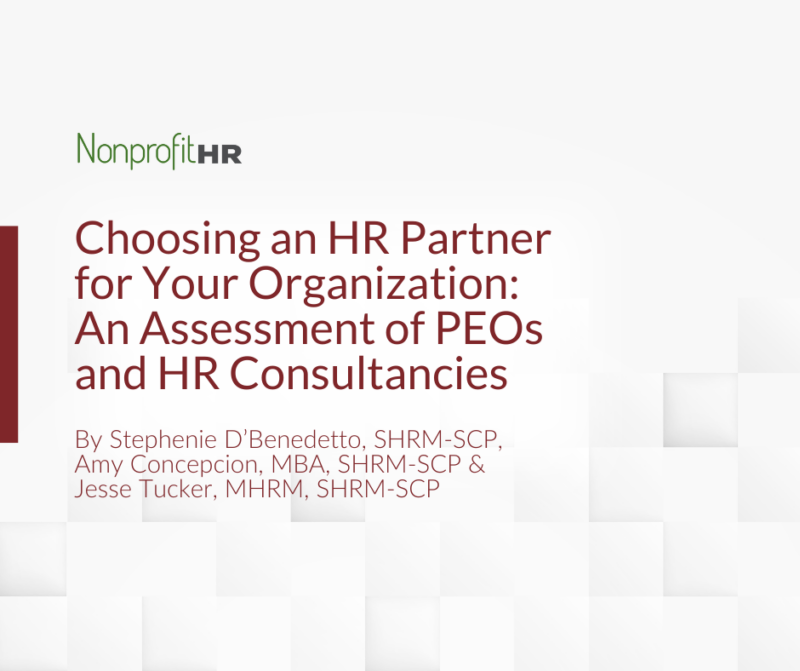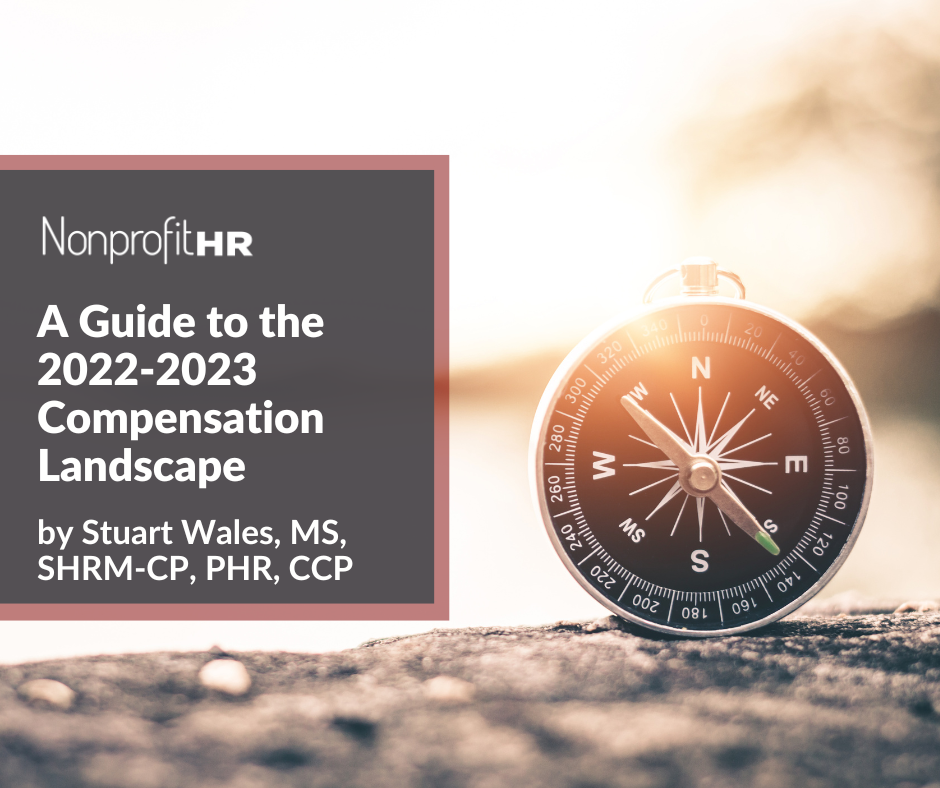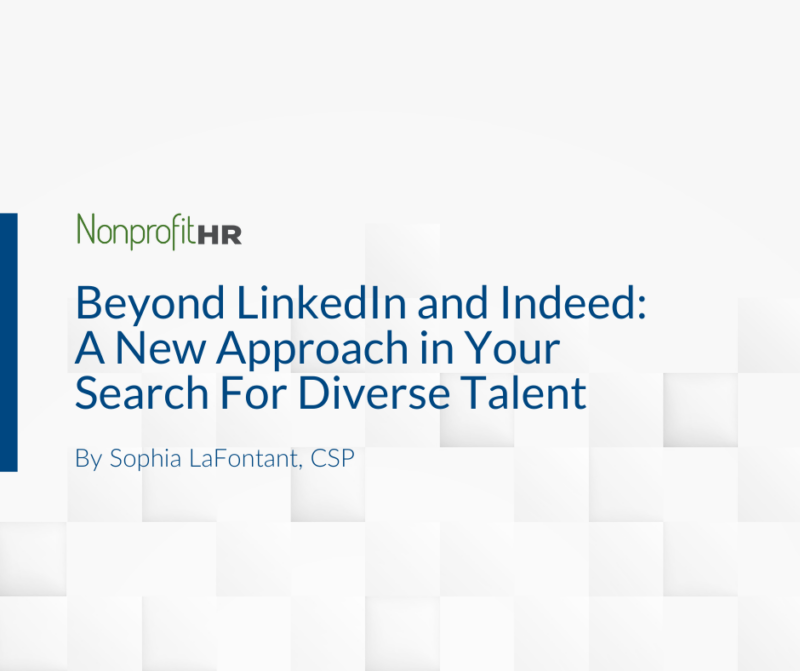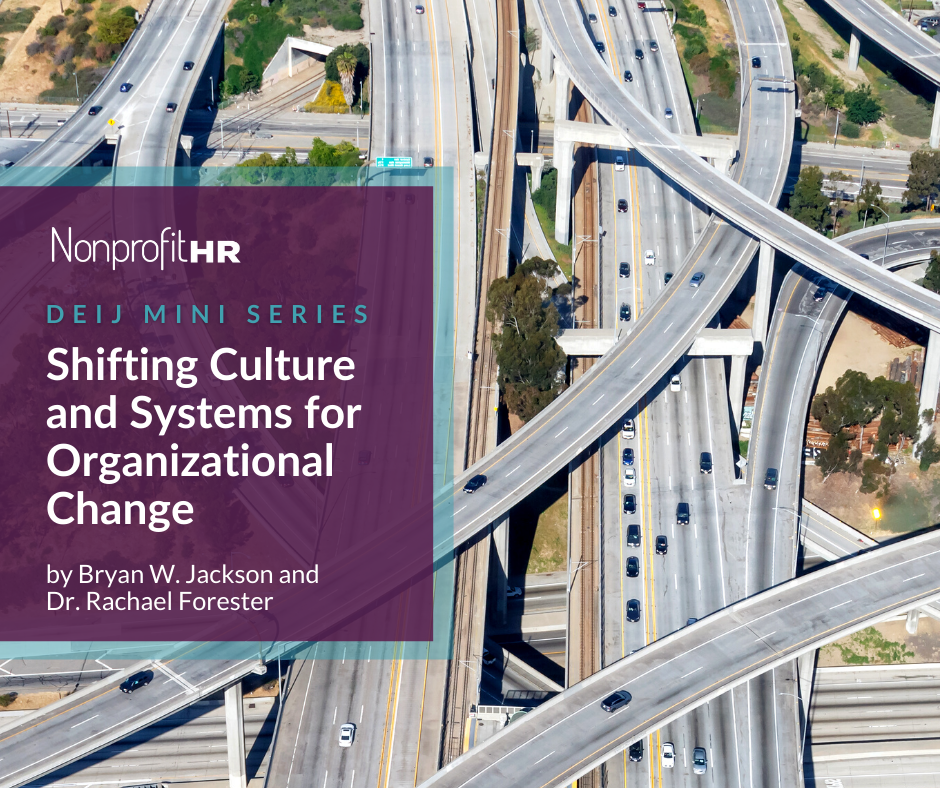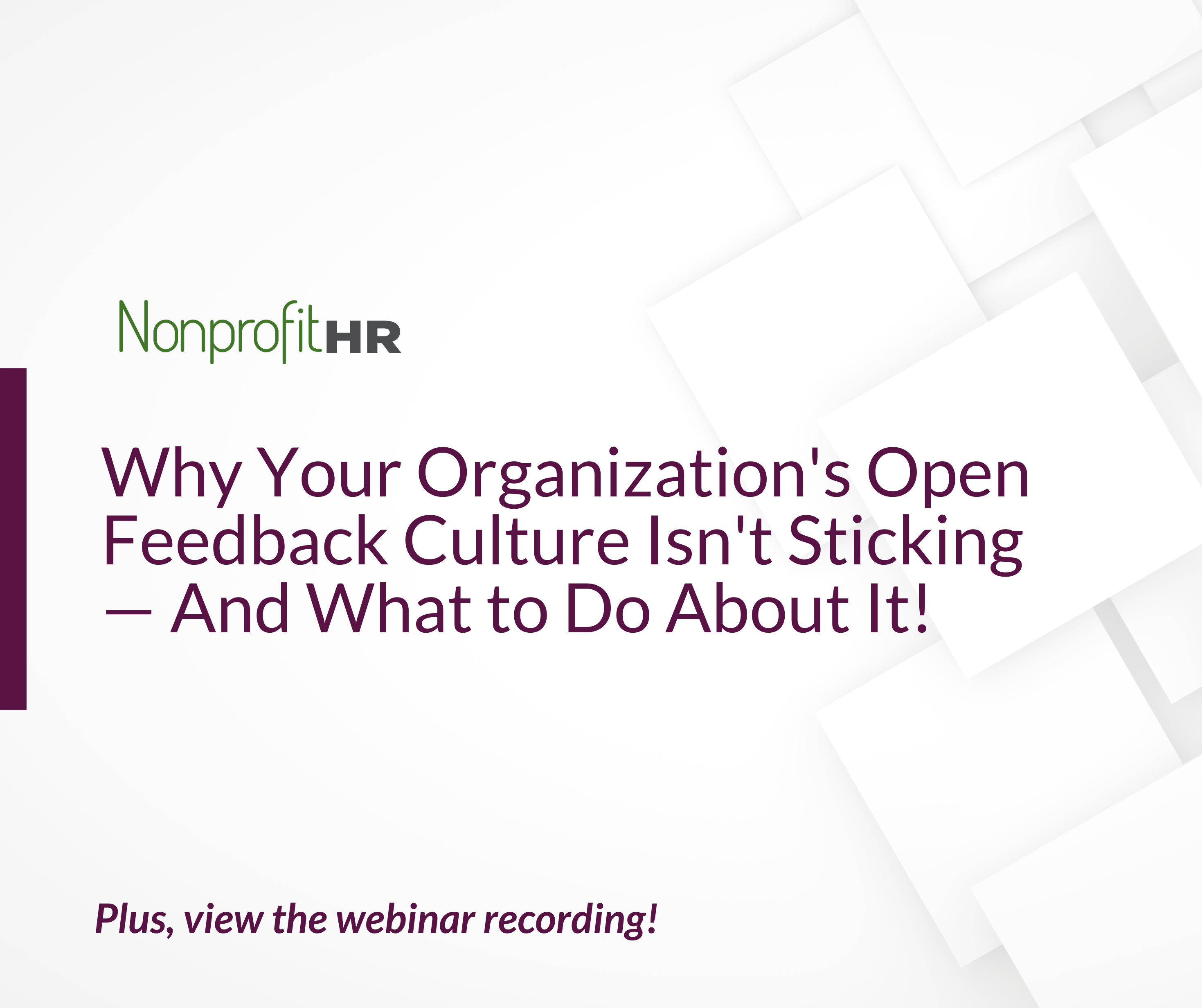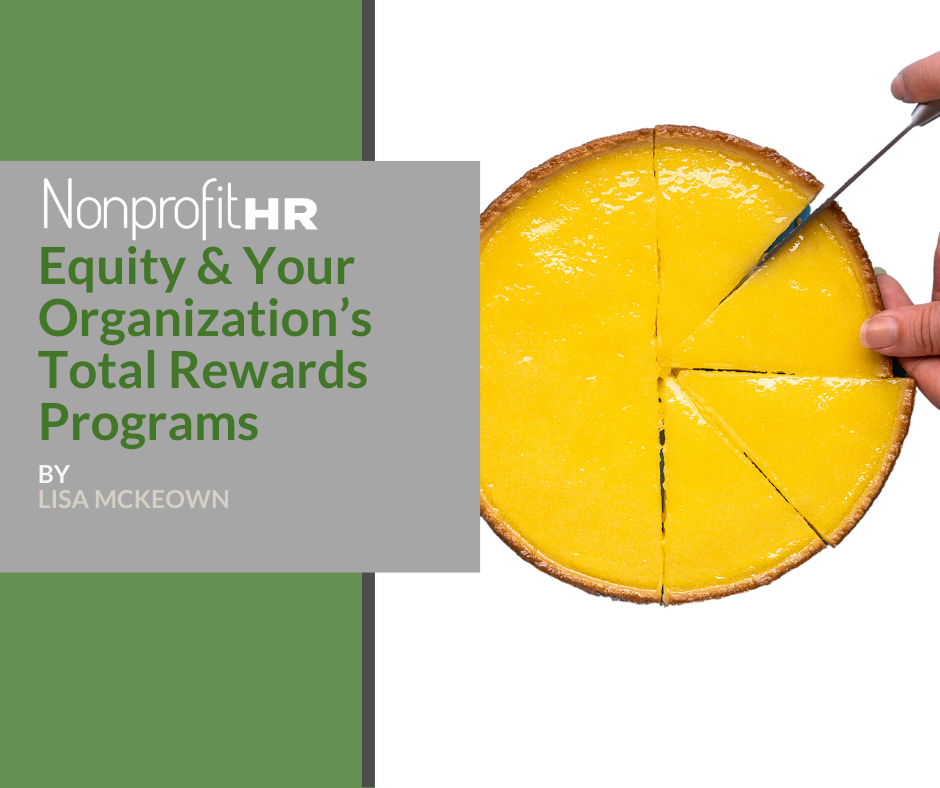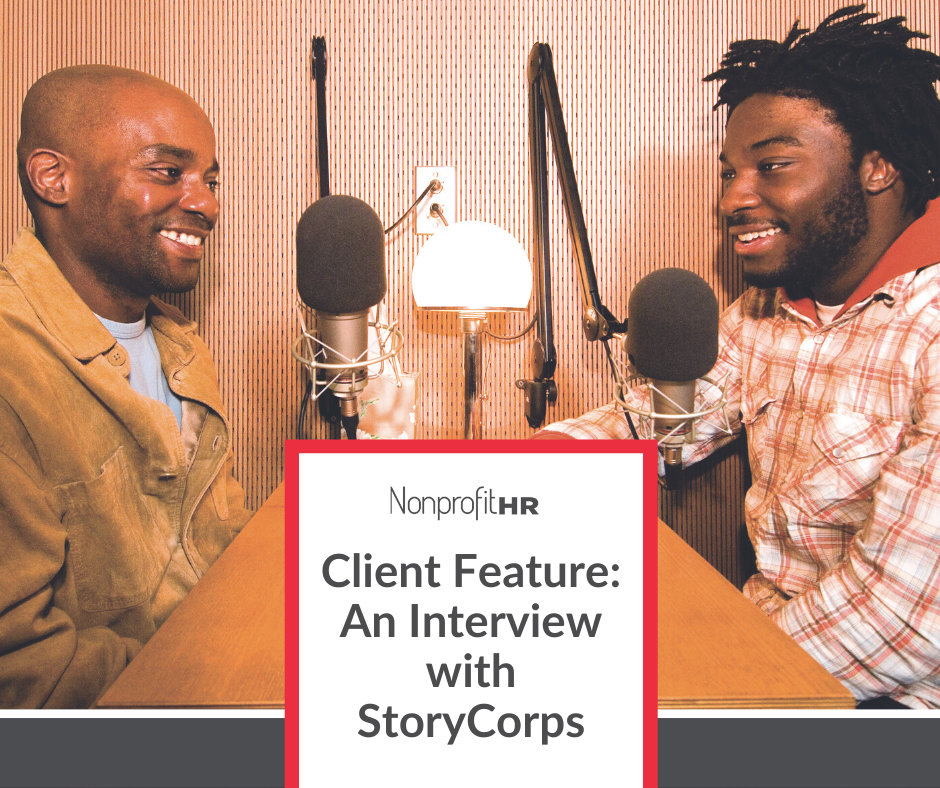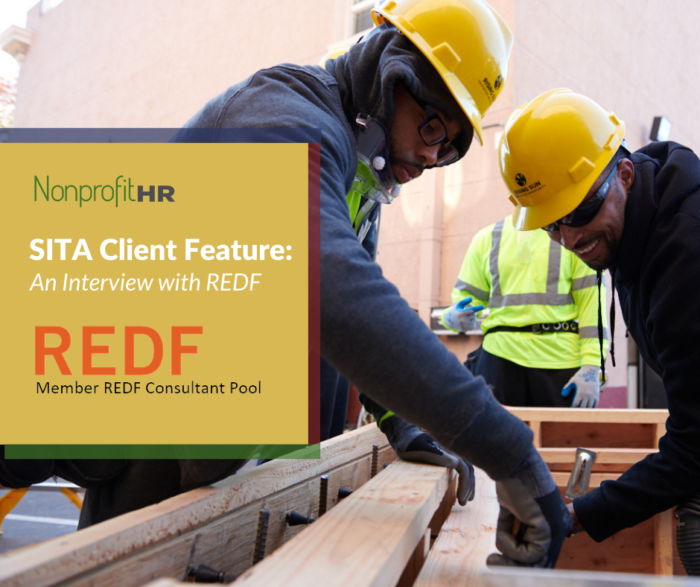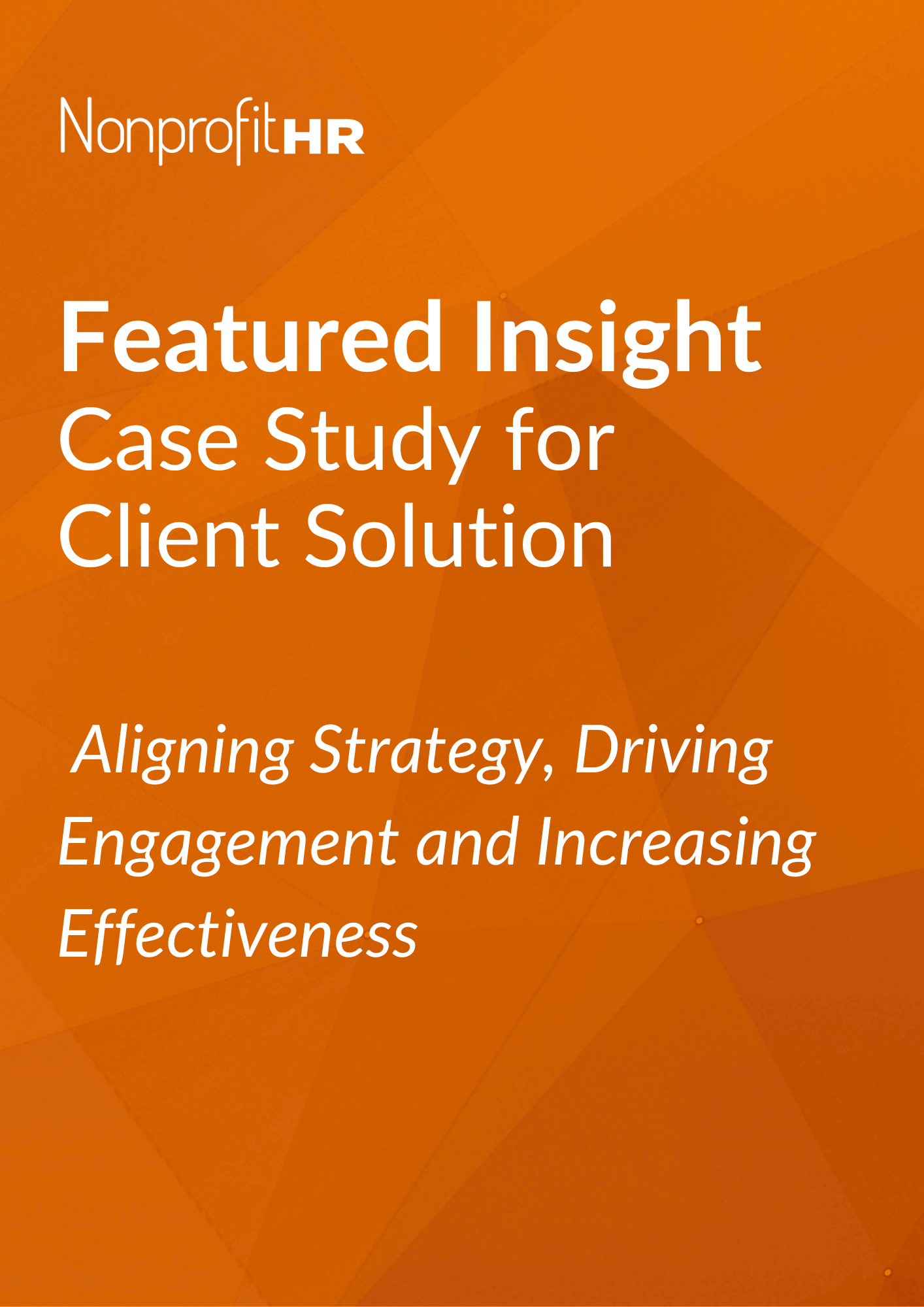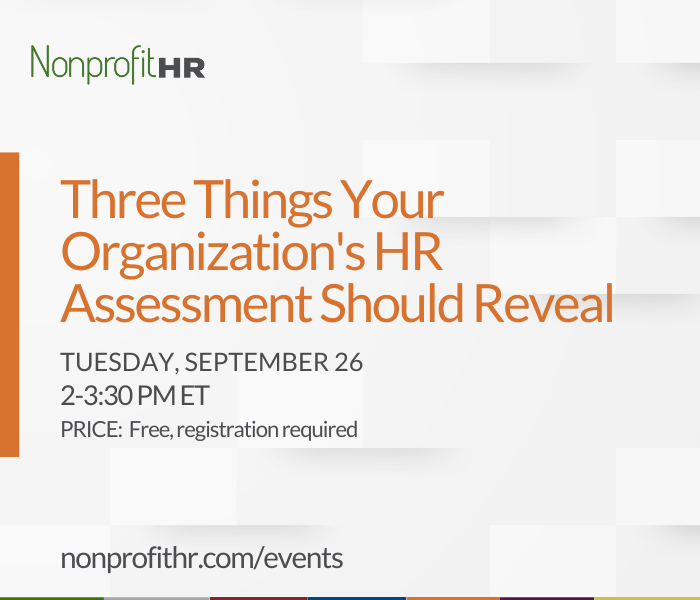WTOP: 5 ways nonprofits can…
Thousands of Nonprofits Served Since 2000
Are Your People Ready
for the Journey?
Building Community for Over 24 Years
There for You During Your Most Critical Moments
We Are Nonprofit HR
At Nonprofit HR, we’ve been in your shoes as an organizational leader and decision-maker for all things talent management, and that is why we wholeheartedly believe that the success of organizations lies in the strength of their people. Our unwavering commitment to the social impact sector drives us to exclusively support mission-driven organizations in the United States and beyond. With a history dating back to 2000, we’ve made a lasting impact on countless employees and the communities they serve. We listen. We advise. We thought-partner with you to optimize your people for your mission-critical objectives. Through our work, we offer tailored, integrated solutions that address the unique challenges of social impact organizations. From strategic planning to talent acquisition and performance management, our comprehensive services are customized to cover every aspect and stage of the employee lifecycle. Each solution is viewed through a lens of equity and rooted in HR best practice. We’re not just consultants; we’re dedicated partners and our virtual accessibility, inclusivity and results-driven approaches ensure your organization’s growth and success — through your people.
View examplesEquity, Diversity, Inclusion & Justice
Expert-level thought partnership aimed at working with organizations to uncover where inequities exist within their systems and provide strategic guidance to revise or create new, equitable systems.
Strategy & Advisory
Project-based advisory services rooted in HR best practices. Customized to meet and advance unique workplace culture, infrastructure and strategic priorities.
HR Outsourcing
Dedicated HR consultants who manage all aspects of the talent management lifecycle, from strategic to tactical and from talent acquisition through exit management.
Total Rewards
Rewards-centric solutions that demonstrate and reinforce value, engage employees, connect them to an organization and allow them to grow their career while also managing their lives outside of work.
Search
A specialized team of recruitment experts focused on finding and identifying the most qualified executives, talent management leaders and professionals to lead core functions of your organization.
Over 23 Years of Experience
Missions We Serve
Advance your mission when you partner with Nonprofit HR to take care of your organization’s people. When you partner with us, you gain more than just a consulting service; you gain dedicated allies invested in your mission’s success. Our consultants bring extensive experience and deep understanding of the unique challenges and opportunities faced by nonprofits. We specialize in providing tailored solutions that address the specific people management needs of social impact organizations. Together, we work tirelessly to foster an environment where your people thrive, your purpose flourishes, and your organization’s impact on the world grows exponentially.
Advocacy, legal and policy mission-driven organizations work tirelessly to protect the rights of the communities they serve. Nonprofit HR proudly partners with such organizations as they take direct action representing people and causes, driving policy reform, and providing legal support and resources.
Arts & culture is essential for society as it enriches lives in meaningful ways, builds and strengthens communities, provides education, and creates space for artists to express themselves. Nonprofit HR realizes the importance of arts and culture and embraces partners that create a more vibrant, inclusive and engaged society.
- Allied Media Projects
- American Composers Forum
- Corcoran Gallery of Art
- Folger Shakespeare Library
- Free Arts NYC
- Grant Park Music Festival
- Jacksonville Symphony
- Joan Mitchell Foundation
- John F. Kennedy Center for the Performing Arts
- Latin American Youth Center
- Mississippi Museum of Art
- Mosaic Theater
- NYC Pride
- Robert Rauschenberg Foundation
- SF Jazz
- Story Corps
- The Washington Ballet
Tackling generational issues such as poverty, abuse, neglect and removing roadblocks to basic needs poses significant challenges. Nonprofit HR understands the importance of this cause and unwaveringly supports social impact organizations as they champion the safety and well-being of these population segments.
- America’s Promise Alliance
- Barbara Bush Foundation for Family Literacy
- Boys and Girls Clubs of Chicago
- Campaign for Youth Justice
- Chicago Commons
- Children International
- Committee for Children
- Foundation for Blind Children
- GOODProjects
- Jeremiah Program
- Little Flower Children and Family
- Methodist Youth Services (MYSI)
- Montgomery County Collaboration Council for Children, Youth and Families
- National 4-H Council
- National Black Child Development Institute
- National Children’s Alliance
- One Hope United
- Reading Partners
- Safe Routes to School National Partnership
- Services of NY
- The Children’s Guild
- YMCA of Austin
- YMCA of Denver
- YMCA of the USA
- Youth INC
- YWCA of the National Capital Area
- Zero Abuse Project
- Zero to Three
Moving up the economic ladder poses a challenge for under-financed people. Mission-driven institutions aim to create a strong, sustainable economy and secure economic and personal freedom for all people. Nonprofit HR empowers economic and finance social impact organizations as a strategic partner to improve global conditions.
- Americans for Financial Reform
- Atlas Network
- Build Commonwealth
- Cammelback Ventures
- Center for Economic Progress
- Center for International Private Enterprise
- Clearwater Neighborhood Housing Service, Inc
- Coalition for Service Industries
- Corporation for Enterprise Development
- Destination DC
- Foundation for Economic Education
- International Monetary Fund
- Microfinance Information Exchange
- Mission Economic Development Agency
- Montgomery County Economic Development Corporation
- National League of Cities
- Social Progress Imperative
- Standing Rock Community Development Corporation
- Upwardly Global
Mission-driven organizations, associations and alliances identify education as their top priority because education is the most important investment society can make to progress our future. Nonprofit HR fully supports these organizations with HR infrastructure and solutions so they can give youth a bridge to fulfilling, meaningful lives.
- 4.0 Schools
- Achieving the Dream
- American Academy in Rome
- American Association of Colleges for Teacher Education
- American Association of State Colleges and Universities
- American University
- Association of American Law Schools
- Aspen Institute
- Black Teacher Collaborative
- Bridges from School to Work
- California Charter Schools Association
- Council on Social Work Education
- Editorial Projects in Education
- Excelencia in Education
- Higher Learning Commission
- Illinois Education Association
- International Baccalaureate
- IELTS USA
- KIPP Memphis
- Leading Educators
- Maya Angelou Schools
- National Alliance for Public Charter Schools
- National School Boards Association
- National Education Association
- Open Minds School
- Paul Public Charter School
- PeerForward
- Princeton In Asia
- Service Year Alliance
- Skills USA
- The Data Quality Campaign
- Youth for Understanding USA
The importance of faith-based communities cannot be overstated. They provide social services, spiritual support, knowledge, guidance and access to material goods needed to survive. Nonprofit HR serves faith-based organizations and emboldens them to focus on addressing community needs and helping people to lead fulfilling lives.
- Catholics for Choice
- First Baptist Church of Marshall Heights
- Franciscavon Action Network
- Friends Committee on National Legislation
- Imam Mahdi Association of Marjaeya, Inc.
- Loudon Interfaith Relief
- Lutheran Life Communities
- Methodist Youth Services (MYSI)
- Moving Traditions
- Reid Temple Christian Academy
- Religion News Foundation
- Temple Israel Boston
- Volunteers of America Chesapeake, Inc.
- Zion Church
Healthcare is a basic human right and mission-driven healthcare organizations advocate for quality, affordable health care for all. In addition to reducing barriers to care, they provide research and information resources. Nonprofit HR stands firmly with organizations as they address intersectionality to improve community well-being.
- 340B Health
- AIDS United
- Alaska Primary Care Association
- American Association of Tissue Banks
- American Hospitals Association
- American Society of Hematology
- Association for Community Affiliated Plans
- Autism Delaware
- Bayhealth
- Catholic Health Association of the United States
- Dermatology Foundation
- District of Columbia Primary Care Association
- Grantmakers in Health
- HealthRIGHT 360
- Howard Brown Health Center
- International Planned Parenthood Federation
- International Society on Thrombosis and Haemostasis
- Maternity Care Coalition
- Mercy Health Clinic
- National Certification Commission for Acupuncture and Oriental Medicine
- National Hospice and Palliative Care Organization
- Population Services International
- Southwest Center
- Stepped Care Solutions
- The Endocrine Society
- The Obesity Society
- Unity Health Care
Everyone deserves a safe, stable place to live. Organizations tackling the complexities of houselessness address realities such as poverty, lack of affordable housing and mental illness. Nonprofit HR fully supports its partners in ending houselessness, closing gaps and providing people at risk with stable housing opportunities.
- Clearwater Neighborhood Housing Services, Inc
- Community Access
- Friendship Place
- Hostels International USA
- Housing Assistance Council (HAC)
- Housing Choices
- Housing Initiative Partnership, Inc.
- Housing Up
- Lighthouse of Michigan
- National Alliance to End Homelessness
- National Low Income Housing Coalition
- Neighborhood Housing Services New Orleans
- NeighborWorks America
- Rebuilding Together, Inc.
- Southeast Rural Community
- Transitional Housing Corporation
Human services can take on many forms and mission-driven organizations support people through activities and programs to meet basic needs, obtain quality care and improve quality of life. Nonprofit HR serves organizations with HR consulting services so they can focus on the big picture of giving people hope, livelihood and fulfillment.
- American Foundation for Suicide Prevention
- Catholic Charities Brooklyn & Queens
- Communities in Schools
- Community Action Marin
- Community Connections
- CORA – Community Overcoming Relationship Abuse
- Doorways for Women and Families
- Foundation for Blind Children
- International Co-operative Alliance
- Loretto Management Corporation
- Montgomery County Collaboration Council for Children, Youth and Families
- Moveable Feast
- National Children’s Alliance
- National Older Worker Career Center
- One Hope United
- OneSight
- Safe Alternatives to Violent Environments
- San Francisco-Marin Food Bank
- Shalom, INC.
- Sheltering Arms
- Volunteers of America Chesapeake, Inc.
- Volunteers of America Oklahoma (VOAOK)
- Volunteers of America, Inc.
Combating food insecurity and ensuring sustainable agriculture are prime global concerns intersecting policy, partnerships and public engagement. Nonprofit HR avidly supports the critical missions to boldly tackle one of the most pressing issues of our time that addresses the environment, human labor and animal welfare.
Athletics and leisure missions deliver the positive impact of improving physical health and fitness, promoting mental health and well-being, introducing social interaction, and emboldening teamwork and camaraderie. Nonprofit HR is proud to call athletics and leisure mission organizations partners to help elevate good for all communities.
- Brown Girl Surf
- City Parks Foundation
- Colorado Recreation & Parks Association
- Community Boating Center
- Cruise Lines International Association
- International Association of Amusement Parks & Attractions
- Montgomery County Road Runners Club
- National Recreation & Parks Association
- Prospect Park Alliance
- US Lacrosse
- USTA Florida
- USTA/Mid-Atlantic Section
- Women’s Flat Track Derby Association
Equity, innovation, resilience and accountability are just some ways to describe mission-driven organizations that build and strengthen communities. Nonprofit HR joins forces as avid supporters of community development organizations to help people overcome challenges, thrive and progress toward better living.
- Blumont
- Center for Economic Progress
- Community Action Marin
- Community Foundations of the Hudson Valley
- Coro New York Leadership Center
- Faith in Action
- Greater Washington Hispanic Chamber of Commerce
- Humentum
- Howard Brown Health Center
- Interaction Institute for Social Change
- Montgomery County Economic Development Corporation
- Public Welfare Foundation
- Rebuilding Together
- Social Innovation Forum
- The Y in Central Maryland
- Transitional Housing Corporation
- UnidosUS
Environmental advocacy is vital for the survival of future generations. Mission-driven environment organizations work to address the concrete challenges of climate change, pollution, deforestation and overpopulation. Nonprofit HR stands by them as they advance environmental policy, build grassroots support and provide a livable climate.
- Alliance for the Chesapeake Bay
- Blue Water Baltimore
- California Native Plant Society
- Center for Earth Energy and Democracy (CEED)
- Conservation Colorado
- Consortium for Ocean Leadership
- Environmental Investigation Agency
- Environmental Working Group
- Food and Water Watch
- Greenpeace
- Green Seal
- League of Conservation Voters
- Manomet, Inc.
- National Forest Foundation
- Natural Areas Conservancy
- North American Association for Environmental Education
- Pennsylvania Certified Organic
- Resources Legacy Fund
- Riverkeeper
- Scenic Hudson, Inc.
- Sequoia Climate Fund
- Sierra Club
- Social Progress Imperative
- Trees For The Future
- Trust for Public Land
- Waterkeeper Alliance
- Woodwell Climate Research Center
- US Climate Action Network
- Water Environment Federation
Philanthropy foundations play a crucial role in our communities, providing funding and resources for a wide range of causes, from education, health care, social justice and technical innovation. Nonprofit HR resolutely supports foundations of various causes so they can make progress toward a better world.
- Advertising Research Foundation
- American Foundation for Suicide Prevention
- Borealis Philanthropy
- Chan Zuckerberg Initiative
- Charles & Helen Schwab Foundation
- ClimateWorks Foundation
- Creative Capital Foundation
- Evelyn and Walter Haas, Jr. Fund
- Foundation for Blind Children
- Gordon & Betty Moore Foundation
- Grantmakers in Health
- Irving Harris Foundation
- Public Welfare Foundation
- St. Louis Public Schools Foundation
- The David and Lucile Packard Foundation
- The Helen J. Serini Foundation
- The Alice Ferguson Foundation
- Tupac Amaru Shakur Foundation
- Victoria Foundation
Healthcare is a basic human right and mission-driven healthcare organizations advocate for quality, affordable healthcare for all. In addition to reducing barriers to care, they provide research and information resources. Nonprofit HR stands firmly with organizations as they address intersectionality to improve community well-being.
- 340B Health
- AIDS United
- Alaska Primary Care Association
- American Association of Tissue Banks
- American Hospitals Association
- American Society of Hematology
- Association for Community Affiliated Plans
- Autism Delaware
- Bayhealth
- Catholic Health Association of the United States
- Dermatology Foundation
- District of Columbia Primary Care Association
- Grantmakers in Health
- HealthRIGHT 360
- Howard Brown Health Center
- International Planned Parenthood Federation
- International Society on Thrombosis and Haemostasis
- Maternity Care Coalition
- Mercy Health Clinic
- National Certification Commission for Acupuncture and Oriental Medicine
- National Hospice and Palliative Care Organization
- Population Services International
- Southwest Center
- Stepped Care Solutions
- The Endocrine Society
- The Obesity Society
- Unity Health Care
Social sector human rights organizations work towards the ideal that everyone should have the same fundamental rights regardless of identity. As organizations protect the undermined, marginalized and victimized, Nonprofit HR serves their performance management functions moving them one step closer to a world where everyone thrives.
- ACLU – New Mexico
- ACLU of the District of Columbia
- Amnesty International USA
- Campaign for Youth Justice
- Center for Court Innovation
- Faith in Action (formerly PICO National Network)
- International Co-operative Alliance
- National Center for Missing & Exploited Children
- Safe Horizon
- SNVUSA
- The Leadership Conference on Civil and Human Rights
- The Tahrir Institute for Middle East Policy
Social sector organizations provide active support for the queer community by challenging stereotypes and prejudice, celebrating LGBTQIA+ culture and advancing change. Nonprofit HR is proud to be an ally and thought partner, so mission-driven organizations can provide legal protections, safe spaces, resources and structure.
- Collective Action for Safe Spaces
- Equality Florida
- Gay and Lesbian Alliance Against Defamation (GLAAD)
- GLBTQ Legal Advocates & Defenders
- GLSEN
- Heritage of Pride (NYC Pride)
- Howard Brown Health
- Mazzoni Center
- National Center for Transgender Equality
- National Queer Asian Pacific Islander Alliance
- PFLAG
- The Marsha P. Johnson Institute
Since the Founding Fathers established the United States in 1776, immigrants have been a driving force in the economy, culture and heritage. Immigration organizations defend and advance the rights of immigrants and refugees. Nonprofit HR serves these social impact organizations so they can help immigrants settle into quality lives.
All communities should have a voice in public policy and political organizations work toward economic empowerment, civic engagement and leadership cultivation. Nonprofit HR aligns with political mission-driven organizations as thought partners to help them shape how we are governed and advocate for political change to protect people’s rights.
Social entrepreneurship takes business principles and gallops to solve social problems. That’s why social entrepreneurship organizations are so exciting and essential. Nonprofit HR stands by the spirit of social entrepreneurship and facilitates HR solutions so partners can experiment, innovate, affect public policy and foster prosperity.
Social impact trade associations facilitate growth and success for various causes, from education, healthcare, energy, law and everything in between. Nonprofit HR partners with trade association organizations to uphold and advance their mission and promote core values of excellence among their communities.
- American Association for the Study of Liver Diseases
- American Association of Colleges for Teacher Education
- American Association of State Colleges and Universities
- American Hospitals Association
- Association for Community Affiliated Plans
- Association of American Law Schools
- Audiovisual and Integrated Experience Association
- Auto Care Association
- California Charter Schools Association
- Catholic Health Association of the United States
- Council on Foundations
- Cruise Lines International Association
- Entertainment Software Association
- Exponent Philanthropy
- Fantasy Sports Trade Association
- Florida Nonprofit Alliance
- Growth Energy
- Illinois Education Association
- Independent Sector
- Institute for Nonprofit News
- International Association of Amusement Parks & Attractions
- International City/County Management Association
- International Franchise Association
- International Life Sciences Institute
- International Planned Parenthood Federation
- League of American Orchestras
- Managed Funds Association
- Manufactured Housing Institute
- Medical Device Innovation Consortium
- National Defense Industrial Association
- National Hospice and Palliative Care Organization
- National Restaurant Association
- National Taxpayers Union
- North American Association for Environmental Education
- Society for Neuroscience
- Society for Public Health Education
- The Endocrine Society
- The Obesity Society
- The Society for Cardiovascular Angiography and Interventions Foundation
Reminding us that animals are entitled to humane treatment, mission-driven organizations work to ensure animals are not subject to cruel treatment. Nonprofit HR partners with animal rights organizations as they work steadfastly to gain support for this overlooked cause.
Organizations advocating for people with diverse abilities believe everyone deserves equal opportunities, rights and acceptance, regardless of physical and mental capacity. Nonprofit HR serves diverse abilities organizations dedicated to creating an inclusive world where everyone can lead whole lives.
Government must serve the people’s interests and government oversight and reform organizations work to hold them accountable. Nonprofit HR solidly supports these organizations as thought partners, emboldening them to do the brave work of investigating, exposing and correcting government failure.
- Accountable.US
- American Oversight
- American Public Power Association
- Atlantic Council
- Corporation for Enterprise Development
- MoveOn Political Action
- Municipal Securities Rulemaking Board
- National Association of Attorneys General
- National Hispanic Caucus of State Legislators
- Project On Government Oversight
- Public Welfare Foundation
- Reporters Without Borders
- Street Law
Tackling generational issues such as poverty, abuse, neglect and removing roadblocks to basic needs poses significant challenges. Nonprofit HR understands the importance of this cause and unwaveringly supports social impact organizations as they champion the safety and well-being of these population segments.
- America’s Promise Alliance
- Barbara Bush Foundation for Family Literacy
- Boys and Girls Clubs of Chicago
- Campaign for Youth Justice
- Chicago Commons
- Children International
- Committee for Children
- Foundation for Blind Children
- GOODProjects
- Jeremiah Program
- Little Flower Children and Family
- Methodist Youth Services (MYSI)
- Montgomery County Collaboration Council for Children, Youth and Families
- National 4-H Council
- National Black Child Development Institute
- National Children’s Alliance
- One Hope United
- Reading Partners
- Safe Routes to School National Partnership
- Services of NY
- The Children’s Guild
- YMCA of Austin
- YMCA of Denver
- YMCA of the USA
- Youth INC
- YWCA of the National Capital Area
- Zero Abuse Project
- Zero to Three
To best serve people, healthcare education and advocacy, social impact organizations ensure accurate, debiased information is accessible to all, compiling useful data and information and providing medical education and training opportunities. Nonprofit HR serves as a thought partner so organizations can focus on delivering equitable access to health information.
- American Academy of Physical Med & Rehab
- American College of Medical Genetics
- American Council of Healthcare Executives
- American Foundation for Suicide Prevention
- Families USA
- Global Advocacy for HIV Prevention
- Guttmacher Institute
- Mental Health America
- National Foundation for Infectious Diseases
- National Resident Matching Program
- Society for Public Health Education
- The Steve Fund
- Truth Initiative
- Upstream USA
Social sector international/NGOs play a significant role in global development and resilience by uniting cooperatives, partnering with emerging market countries and serving impoverished and vulnerable populations. Nonprofit HR embraces its thought partnerships with organizations that work tirelessly towards a prosperous world.
- Amnesty International USA
- CLASP
- Center for International Private Enterprise
- Corus International
- Crossing Borders
- EMpower – The Emerging Markets Foundation
- Global Communities
- Humentum
- InterAction
- International Co-operative Alliance
- International Monetary Fund
- International Rescue Committee
- IREX
- Pathfinder International
- Qatar Foundation International
- The Tahrir Institute for Middle East Policy
- Universities Research Association, Inc.
- Upwardly Global
- US Global Leadership Coalition
- US-China Business Council
According to the World Bank, nearly 720 million people worldwide suffer from poverty. Nonprofit HR avidly serves organizations so they can tackle the root causes of poverty, work to address cultural, career, academic and social impoverishment needs, and provide career and skills training, entrepreneurship opportunities and housing.
- ACCE Institute
- Back to School Clothing Drive Association
- Byte Back
- Clearwater Neighborhood Housing Services, Inc.
- Corporation for Enterprise Development
- Friendship Place
- Goodwill Industries International, Inc.
- InterAction
- LIFT
- Loudon Interfaith Relief
- Martha’s Table
- Prosperity Now
- SOME (So Others May Eat)
- The Kufi Club
- The Ounce of Prevention Fund
- Transitional Housing Corporation
Racial justice existed before the Founding Fathers established the United States. Racial justice organizations have never been more needed. Nonprofit HR is a strong proponent of equity, diversity, inclusivity and justice and avidly partners with racial justice organizations to advance advocacy, policy change, community and empowerment.
- Asian American LEAD
- Asian Americans for Community Involvement
- Black Futures Lab
- Black Girls Code
- Brown Girl Surf
- BVM Capacity Building Institute Inc (Formerly Black Voters Matter Fund)
- Color Of Change
- Congressional Black Caucus Foundation
- National Association of Black Accountants
- National Black Child Development Institute
- National Urban League
- Race Forward
- Surge Institute
- The Executive Leadership Council
- The National Council of Negro Women
Social justice missions are so important because they support various causes, from the tenet that everyone is entitled to the same rights regardless of their identity, to securing everyone’s economic stability to promoting health and wellness. Nonprofit HR stands proudly to partner with and advocate missions that are advancing social justice.
- Alliance for Safety & Justice
- Black Futures Lab
- Borealis Philanthropy
- Chan Zuckerberg Initiative
- East Bay Community Law Center
- Evelyn and Walter Haas, Jr. Fund
- Every Texan
- Excelencia in Education
- Friends Committee on National Legislation
- Interaction Institute for Social Change
- Jack and Jill of America Foundation
- Mission Economic Development Agency
- National Criminal Justice Association
- NETWORK Lobby
- Open Philanthropy
- PICO California
- Public Allies
- Public Welfare Foundation
- The Steve Fund
Social sector organizations that promote professional societies play a pivotal role in advancing a wide range of industries and professions. Nonprofit HR, the leading consulting firm serving social impact organizations, firmly supports professional societies as they connect peers and foster collaboration.
- Allergy & Asthma Network
- American Academy of Arts & Sciences
- American Association for the Advancement of Science
- American Board of Genetic Counseling
- American Foreign Service Protective Association
- American Physical Therapy Association
- American Political Science Association
- American Psychiatric Association
- American Society for Parenteral and Enteral Nutrition (ASPEN)
- American Society of Hematology (ASH)
- American Staffing Association
- Association for Women in Science
- Association of Women’s Health, Obstetric and Neonatal Nurses
- Association of Fundraising Professionals
- Association of Maternal & Child Health Programs
- Council of Chief State School Officers
- Council on Social Work Education
- Gerontological Society of America
- International Parking Institute
- International Society on Thrombosis and Haemostasis (ISTH)
- Kappa Kappa Psi
- National Active & Retired Federal Employees
- National Association of Area Agencies on Aging
- National Association of Attorneys General
- National Association of Black Accountants
- National Business Officers Association
- Optical Society of America
- Pharmacy Technician Certification Board
- Society of Nuclear Medicine and Molecular Imaging
- The Council of Insurance Agents & Brokers
- Women’s Flat Track Derby Association
Social sector organizations strive to solve the world’s most pressing problems and innovate to improve lives. Research is intrinsic to advancing understanding of the world and solving its problems. Nonprofit HR is dedicated to empowering research organizations to foster research that informs, facilitates, upholds and improves on chief social issues.
- Advertising Research Foundation
- American Association for the Study of Liver Diseases
- Center for Applied Linguistics
- Center for Strategic and International Studies
- Consortium for Ocean Leadership
- Future of Privacy Forum
- Houston Advanced Research Center
- Intelligent Transport Society of America
- International Life Sciences Institute
- Manmoet, Inc.
- Microfinance Information Exchange
- Pew Research Center
- The Brookings Institution
- The Endocrine Society
- The Obesity Society
- Universities Research Association, Inc.
- Urban Institute
Technology has the power to create positive social impact and solve some of the world’s biggest challenges; it also connects people and improves lives. Nonprofit HR serves mission-driven technology organizations seeking to close digital divides, navigate complex laws and regulations, and advance processes, research and development.
Women are entitled to fundamental human rights, and when denied, negative social impact results. Nonprofit proudly partners with mission-driven women’s rights organizations as they ensure that certain rights are protected so that every woman can live lives of dignity, equity, health and well-being.
- A Woman’s Place
- Association for Women in Science
- Association of Maternal & Child Health Programs
- Center for Reproductive Rights
- Every Mother Counts
- Feminist Majority Foundation
- Fund Texas Choice
- Girls Inc. of the Washington DC Metropolitan Area
- International Planned Parenthood Federation
- International Women’s Health Coalition
- MADRE
- MSI Reproductive Choices (Formerly Marie Stopes International)
- National Abortion Federation
- National Organization for Women
- National Women’s Law Center
- Sasha Bruce Youth Work Inc.
- YWCA of Silicon Valley
Seeking New Career Opportunities?
Here at Nonprofit HR, we know that our company is only as strong as the people that work within it, so we seek out and hire the best and brightest professionals in our industry. Visit our career center for opportunities to work for us or with us.
Nonprofit HR Events
At Nonprofit HR, our passion for knowledge and research drives us to curate dozens of immersive virtual learning opportunities every year, exclusively designed to empower and uplift professionals in the social impact sector. Our events are purposefully crafted to facilitate growth, foster connections and support the development of nonprofit professionals.
Feature
News Stories
in Nonprofit HR and Other Publications
Nonprofit HR is often sought after by social sector-specific publishers, editors and reporters from local and national publications. Access many news stories about our knowledge, research and glean from the expertise of our subject matter experts now.



